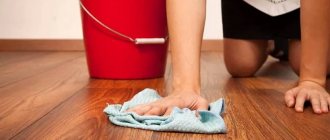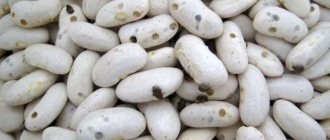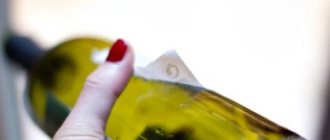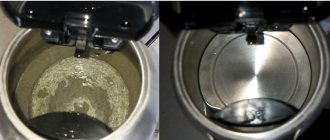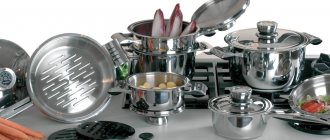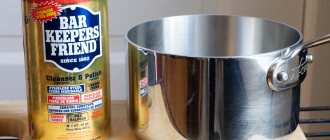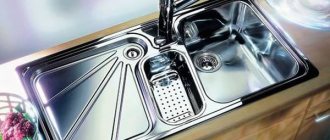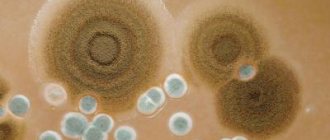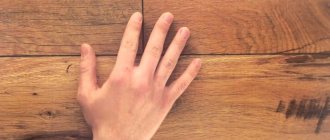Question:
Hello! A gipfel stainless steel pan, after a couple of uses, became covered with rainbow spots on the bottom. Is it dangerous to cook in it? I cook porridge for my child in it. Is it possible to store cooked food in the refrigerator in it? Thank you)
Answer:
Rainbow stains almost always appear on new stainless steel cookware. They do not affect the safety and functional properties; they go away on their own over time, or they can be removed with a solution of citric or acetic acid.
Regarding storage, it depends on the grade of steel. For example, in dishes made of AISI 304 stainless steel you can store food for several days without problems, AISI 430 steel is less suitable for this - products containing acids quickly deteriorate in it, their color changes and an off-flavor appears. In general, it is better to use glass or enamel containers for storage.
Have you updated your pans by choosing stainless steel products? A good choice! You're probably happy with them. But... these rainbow stains that appear in the pan do not allow you to fully enjoy the dishes.
Let's see if these stains are evidence of poor quality of the product. We will also tell you how to get rid of them.
Rainbow stains in a pan
Stainless steel cookware is truly a great purchase. And it is no coincidence that it is in high demand among housewives. Its advantages are its aesthetic appearance, strength and durability.
However, during use, multi-colored spots may appear on it.
IMPORTANT! This type of coloring is typical for new products. In most cases it is not a sign of a defect.
Often stains appear immediately after the first boil or during the initial period of use. Possible sources of the problem:
- high level of water mineralization (varies depending on the region);
- prolonged overheating of dishes.
The first reason is explained by the precipitation of mineral salts during the cooking process. At the bottom of the product there is a concentration of these substances in the form of spots. And over time, their size and density increase.
Elevated temperatures cause spots to appear . This happens if you leave the dishes on the fire without liquid for a long time.
Color stains do not affect the quality of food and do not form harmful impurities. The only question is the aesthetic appearance of the pans.
REFERENCE. If color changes occur after a long period of use, it should be taken seriously. You may have purchased a product that was made using low quality steel.
This depends on the manufacturer: for example, Chinese products are attractive in price, but are inferior in quality to expensive European counterparts.
How to wash stainless steel using traditional methods?
The surface of stainless steel kitchen utensils is very vulnerable, although it has such an “iron” name. You need to choose a cleaning product carefully, as some of them can leave scratches on the surface.
It is recommended to remove contamination with non-aggressive substances that can be found in any kitchen.
Lemon juice
Lemon juice will help clean dirty dishes and restore their original shine:
- Pour 1 glass of water into a small container, add 1 tbsp. l. lemon juice. Mix thoroughly.
- The surface of the pan is wiped with a soft sponge dipped in the prepared lemon solution, then washed with water.
- After cleaning, wipe dry.
- To make the pan shine, it is polished with a flannel cloth.
Advice ! Large stains cannot be cleaned with lemon juice. This method is more suitable for minor stains.
If the surface of the pan is very burnt, then you should use activated carbon. Tablets in the amount of 2-3 pieces are crushed into powder and sprinkled over the burnt area. The black powder is lightly moistened with water, turning it into a paste. Rub the resulting mixture onto the problem area and leave for half an hour, then rinse everything off with water.
Vinegar and water
Mix water and vinegar in equal proportions and bring to a boil. The dirty pan is kept for 15 minutes over the steam coming from the boiling vinegar solution. When the dirt softens, it is washed off with a soft sponge. This option is used when you need to clean the outside of the bottom of the pan from carbon deposits.
Soda
You can get rid of burnt old fat using simple soda:
- Pour 5 liters of water into the container and put it on fire.
- After boiling, add 1 pack of soda to the liquid.
- A dirty pan is immersed in a boiling soda solution for 2 hours. If the contamination is small, 1 hour is enough.
- After time, the remaining dirt is wiped off with a soft sponge and soda.
Sprinkle soda over fresh grease stains and burnt marks. After 2 hours, the softened dirt is washed off with a sponge.
Read more ► 7 ways to clean gold and diamonds at home: secrets of jewelers
Ascorbic acid
Using ascorbic acid you can get rid of scale that forms inside the pan. To do this, fill the dirty container with water, then add ascorbic acid, after crushing it to a powder state.
The solution is thoroughly stirred and brought to a boil, then removed from the heat. After complete cooling, the liquid is drained, the remaining scale is wiped off with a damp cloth, and the container is thoroughly rinsed to remove acid.
Glue and laundry soap
To prepare the mixture you will need PVA glue – 1 tablespoon and laundry soap 1/3 of a piece. For better dissolution, rub the soap on a coarse grater.
All ingredients are dissolved in 4 liters of water. Dirty dishes need to be boiled for 30 minutes in the prepared mixture. This method is suitable for removing old dirt.
How to remove stains in a saucepan
The key feature of rainbow stains is that they are simple and easy to remove.
- Add a weak solution of acetic acid Use a soft sponge to thoroughly clean the surface. Rinse off and then wipe dry with a dry towel.
- Use a sponge or soft brush with a warm solution of citric acid . The product is processed, washed and dried.
Both the first and second methods are equally effective.
ON A NOTE . Instead of citric acid, you can wipe the surface of the dishes with a slice of lemon.
Adding shine
You can restore the original appearance of stainless steel kitchen products and extend their service life by polishing.
The procedure is carried out as follows:
- A soft sponge is soaked in vinegar or a special product designed for polishing steel, then the dishes are wiped with it. You can also use lemon juice. Before use, the juice is diluted in the following proportions: 1 tablespoon of juice per 1 glass of water.
- The polished dishes are washed with clean water and wiped with a dry towel.
- If you wipe a pan with raw potatoes, its surface will become glossy.
How to properly care for stainless steel pans
To ensure that your kitchen utensils last as long as possible, follow these recommendations.
- Before first use, wash the product with soapy water and wipe dry with a towel.
- If possible, use distilled water when preparing.
- Do not leave empty cookware on the fire.
- Salt should only be added to boiling water and stirred thoroughly until completely dissolved.
- The cooking temperature must be stable.
- When washing pans in the dishwasher, use a pre-soak.
- Make sure the cookware is cool before cleaning the surface.
- Wash pots in warm water and using mild solutions: vinegar, soda, citric acid. At the end of the procedure, you must thoroughly rinse the product and wipe dry.
- We clean it strictly after each use.
ATTENTION! For cleaning, do not use metal sponges or detergents with aggressive additives (chlorine, ammonia). They can damage the product and significantly reduce its service life.
We hope that our article has comprehensively answered your questions regarding stainless steel cookware.
Sometimes the joy of a successful purchase quickly gives way to disappointment. This also happens with kitchenware and utensils, and not even with the cheapest ones. For example, many housewives who are sensitive to cleanliness are very familiar with stains on the bottom of a stainless steel pan. At the same time, some immediately consider this a defect and rush to return the goods, others try to get rid of them on their own, and still others... do not encounter such a situation at all. Let's figure out what these marks on the metal are, and whether they are a sign of low quality cookware.
Stains
Stains usually appear on the bottom of pans, and in different cases at completely different times. One housewife may notice small dotted spots after several months of cooking, while another may notice them after the first use.
The nature of their appearance is quite simple. Unfiltered tap water, which is used for cooking in most kitchens, contains a certain amount of minerals and oxides, for example, manganese, sodium, silicon, iron, calcium. Moreover, the amount of impurities depends on the region or even the house (on how old the pipes are in the water supply system).
When water is boiled, part of it always evaporates, and the mineral impurities it contains (usually calcium and silicon salts) settle to the bottom and walls. Despite the fact that stainless steel cookware looks shiny and polished, there are always microscopic irregularities on its surface. They are quite enough for the deposited salts to cling to the bottom. With each subsequent boiling, there will be more and more deposits, and new particles of salts will continue to cling to those previously left there, so small dots on the bottom of the dishes gradually turn into noticeable stains.
The spots may be light or dark. Light ones are formed by calcium salts. This is the most common scale, well known to all owners of electric kettles. Dark spots are the result of exposure to silicon salts.
If your kitchen has pans with non-stick Teflon or ceramic coating, then you will notice that such stains do not form on them - the fact is that the surface of ceramics and Teflon is much smoother, which is why salts cannot begin to build up on it.
Considering the above, we can conclude: the appearance of stains is not a defect, but a feature of the material of the dishes. Moreover, you can try to remove them. At the same time, another reason for spot darkening of the walls may be rust, which, logically, should not exist on stainless steel. Its appearance can be considered a defect and a warranty case. You can check what causes the darkening with vinegar - it does not remove rust.
Why doesn't stainless steel rust?
Let's start with the basics. Any steel is not just one metal in its pure form, but an alloy consisting of an iron “base” and various additives, and not always metal ones. In fact, additives make it possible to give the alloy the necessary properties, for example, strength, ductility and resistance to rust. Metal rusting is a natural chemical process that occurs when iron comes into contact with water. Moreover, it is not necessary to constantly pour water on a metal product, since its smallest particles are always contained in the air.
In order to prevent contact of steel with moisture, its surface is covered with varnishes, paints and enamels. If you have an old enamel plate or pan in your household, you will notice that the place where the enamel broke off due to an impact quickly begins to become covered with a brown coating. There is another approach - you can act “from the inside”, that is, add metals to the alloy that do not react with water. These include, for example, chromium and nickel. Actually, it is to them that stainless steel cookware owes its beautiful shine.
It works as follows: under the influence of atmospheric oxygen, a thin oxide film is formed on the surface of the alloy. It is not completely transparent, but due to its extreme thinness it is not possible to see it, so it seems to us that the metal is not covered with anything. The film has the property of self-healing (contact with oxygen does not stop for a second), so even deep scratches do not become a source of rust.
NZhS grade 18/10
It’s immediately worth noting that almost all Gipfel stainless steel kitchen utensils are made of 18/10 steel. This grade of steel is often called medical or surgical, since surgical instruments are made from it, which says a lot about the safety of this type of steel for humans. The numbers 18/10 indicate the percentage of chromium (18%) and nickel (10%) in the metal. These components make NZhS 18/10 stronger and more durable than other brands, and also protect the surface from chemical interaction with food.
How then did stains appear on stainless steel?
Staining stainless steel pans is another chemical process. Moreover, even the most expensive and high-quality products are susceptible to it.
The spots can be of different colors, so it’s worth talking about them separately.
Rainbow
Over time, large, shapeless rainbow or blue-violet stains may appear at the bottom of the pan. They appear under the influence of heat: when heated above 100°, the formation of a protective oxide layer is greatly accelerated. Over time, it thickens so much that it begins to cover the natural shine of the metal. This is not a defect: they do not affect the properties of the product itself or the taste of food.
Such stains can only be removed by sanding or polishing (for example, with fine sandpaper), but this is not advisable, since constant aggressive cleaning will simply make the problem areas very thin, and eventually the pan will leak. It’s best to just accept their presence, and to prevent them from appearing in new dishes, just don’t leave them empty on the fire.
Cleaning inside
When a pan burns, you need to determine the degree of “heaviness” of this burnt layer. There are cases where the bottom is covered with a black shell-like crust, which is not even susceptible to the action of a knife. And there is a loose layer that is removed much faster and with less effort. There are three ways to clean a burnt stainless steel pan of varying degrees of contamination:
The first method is a strong degree of pollution
To do this, you will need baking soda and silicate, office glue (liquid glass). Water is poured halfway into the pan, making sure that all burnt areas are covered. Add a tablespoon of baking soda and a tablespoon of glue and mix thoroughly. Place the contents over low heat and bring to a boil.
During the heating process, the first results of cleaning will already be visible - the fumes will flake off in flakes. When the solution boils, you need to focus on the degree of contamination and maintain your time. For a pan that is not too dirty, 10-15 minutes of low simmering is enough; dirty dishes need to simmer longer - 30-45 minutes. The result is the same: the entire black, burnt layer comes off on its own under the influence of high temperature, glue and soda, without the use of physical effort.
The second method is a strong degree of pollution
The method is effective, but has one side effect - a strong, unpleasant odor from vinegar. In this case, you will need 9% table vinegar and laundry soap, grated or cut into small pieces. First, pour vinegar and water (1 part water, 1 part 9% vinegar) into the pan, taking into account that all burnt areas will be covered. Close the lid and leave for a couple of hours.
In some cases, all burnt food comes off on its own after such soaking. When stirring and tilting the pan in different directions, the cleaned surface will be visible, and the solution will turn black.
If this does not happen and some of the burnt food does not come away from the surface, then the process needs to be intensified and additional means must be used. Place a few tablespoons (3-5) of grated soap into a saucepan with a solution (1 part water, 1 part vinegar), stir lightly, cover with a lid, and put on fire. The contents are brought to a light boil and simmer slowly for 25-40 minutes (depending on the degree of contamination), while the heat is reduced. After completing the procedure, you can see how all the fumes and dirt have ideally moved away from the surface of the pan.
The third method is the average degree of pollution
For cleaning you will need salt, soda and 9% table vinegar. Soda is poured into an empty, dirty pan, covering all burnt areas with a thin layer. 3-5 tablespoons of vinegar are added there. Everything starts to sizzle as the soda and vinegar react. Spread the mixture evenly with a sponge and leave for 15-20 minutes. Then add a spoonful of salt (or maybe a drop of dishwashing detergent) and use the abrasive side of the sponge to clean everything off. The product is rinsed and wiped dry.
Free legal assistance
So I’m thinking: should I throw it away or can I still revive it? Uncle March 19, 2007 16:56 I would like your concerns....
Chocolate March 19, 2007 17:26 Well, no, wait, Uncle, if it rusts, then all this will go into my soup, and this is no longer good. So I’m interested in what people will tell me about possible resuscitation. Meanwhile, I’m taking a closer look at the saucepans with steamer inserts. Esmarhov March 20, 2007 00:11 In a bucket... Or cook for those who have a lack of iron in their bodies.
We recommend reading: Federal law on benefits for veterans of combat operations in Afghanistan
Well, or paint it again. Enamel. Just treat it with anti-rust first Kati March 20, 2007 11:04 It wasn’t... Is it possible to buy it somewhere separately?
Whose production? Otherwise I’m already tormented with spots... Svetlana, sorry, I just saw your post.
It is important that you MUST accept goods of inadequate quality from the consumer and, if necessary, check the quality of the goods.
The consumer has the right to participate in checking the quality of the product.
Bring back decorativeness
Shine is a recognizable feature of stainless steel. Over time and after washing, dishes, household appliances and heating devices lose their former attractiveness. There are ways to help restore decorativeness.
Toothpaste and ammonia will help get rid of rainbow stains on stainless steel. Add a couple of drops of alcohol to the cleaning mixture, then apply it to the defects with a napkin. After a couple of minutes, rinse with clean moisture.
Bring back beauty to the alloy Source aredi.ru
To make kitchen utensils shine, use lemon juice. For a liter of cold water, 1 teaspoon of liquid is enough. Dip a sponge into the solution and rub generously over the surfaces inside and out. Cutlery can be soaked for a couple of minutes. Then the dishes are rinsed and wiped dry with a clean cotton towel.
Raw potatoes will help polish your stainless steel sink, hob and hood. The tuber is cut into halves. The wet side is rubbed over the problematic surface, then rubbed with a dry cloth.
Features of tableware steel
If the dishes get dark - no problem! A stainless steel article is any type of iron-carbon alloy with the addition of chromium, which creates a protective, self-renewing anti-corrosion film on the metal surface. High-quality chrome-nickel steel alloy marked X18N10 (8/10) is used for the manufacture of cookware. This steel is distinguished by high levels of safety and durability, thanks to which, with proper care, even after decades, dishes made from it will not only retain a shiny appearance, but will also be environmentally friendly and safe for cooking.
Today, the range and scale of production of steel chrome-nickel cookware is incredibly extensive, thanks to its positive distinctive qualities. Of these, four main ones can be distinguished.
- Heat resistance. Steel 18/10 retains its nominal qualities over a fairly wide temperature range. This allows you to use such dishes equally effectively both at negative temperatures, for example, in the freezer, and at high temperatures - in the oven.
- Wear resistance. Steel alloy is one of the strongest and toughest. Such dishes are resistant to deformation, scratches, chips and other mechanical damage, which is very important in everyday life. Steel pots and pans can be used when cooking on different types of stoves: gas, induction, glass-ceramic.
- Corrosion resistance. High resistance to moisture, acids and alkalis makes steel an ideal choice for making tableware, because kitchen utensils are most susceptible to the aggressive influence of food acids, detergents and liquids.
- Hygiene. The high density of the metal and polishing of stainless utensils to a mirror shine makes them resistant to the accumulation and spread of harmful microorganisms. In addition, numerous studies have proven the bacteriostatic properties of steel, that is, its ability to prevent the development of pathogenic microbes.
Steel cookware also has features depending on the surface treatment method:
- polished products retain heat longer and are more hygienic;
- matte products are more resistant to mechanical damage.
Steel cookware does not change the taste of food either during cooking or even during long-term storage. In addition, during cooking in such a pan or when frying in a frying pan, the products retain their beneficial properties as much as possible.
Reviews about cleaning stainless steel
And I wash my stainless steel sink with the addition of vinegar, and where there is a coating in the form of white stains and scale from hot hard water, I pour vinegar essence into it, add a little hot water. A reaction occurs immediately, hisses and foam is released. After this it is clean and shiny. And our refrigerator, also made of stainless steel, is huge with two doors and an LCD display on the door, you can’t rub it with vinegar. I take a lemon, cut it in half and rub the refrigerator with half, after which I wash off the remaining lemon with a soft cloth and wipe it dry. And it’s clean, there are no scratches, and it doesn’t smell like chemicals.
zizi9
https://forum.domik.ua/nerzhavejka-na-kuxne-kak-uxazhivat-t20542.html
I also have SIF-gel for stainless steel, but when I ran out, I washed it with ordinary products, then washed them off clean, and the most important thing that I understood is that I need to wipe it dry, at first it seemed boring to me, but now I’m used to it, I wiped it dry and ok, the stains remain from water that has not dried up.
Marisha
https://www.babyblog.ru/community/post/domovodstvo/1693128
If the case is advanced, then only Schumanit will help (and not always), but this is just a nuclear agent, it would be better to use it in a respirator, with thick gloves and then wash it off with I don’t know how much water in the hope that Schumanit did not penetrate inside dishes and its poison did not take hold there... In general, I’m afraid to wash dishes with it. If only the outside.
Arabesque
https://forum.cofe.ru/showthread.php?t=109941
Household chemicals
Ready-made industrial products are ideal for those who do not have time to boil or mix homemade solutions for a long time. Household chemicals act very quickly. During the procedures, it is important to adhere to the period specified in the instructions. Contact with stainless steel for too long will destroy the chromium oxide.
The Russian product “Sanita anti-grease” will do an excellent job of removing dark carbon stains on dishes, sanitary and household appliances. The chemical is produced in different forms. To clean the hob, hood and sink, use a spray liquid. Concentrated gel is ideal for dishes. On average, exposure should not exceed 20 minutes, after which it is washed off generously.
Household chemicals for alloy Source shop.nissa-biysk.net
“CIF” and “Shumanit” have similar characteristics and are marked “Anti-grease for stainless steel.” The alkaline preparation “Lyma Professional” does an excellent job of removing carbon deposits on metal surfaces. The only requirement for all chemistry is to work with gloves.
To combat limescale, “CILLIT BANG” has proven itself well. Simply spray the liquid and leave for 15 minutes. After a quarter of an hour, wipe off the remaining scale with a rag. Additionally, it eliminates bacteria, which is important for washing.
Concentrated products are used to remove congealed fat on the hob and hood. Aerosol “HD” is classified as a professional household chemical. The drug is evenly applied to dark spots, left for 5 minutes, then removed with a cloth. The treated part must be thoroughly rinsed with water.
Shine product Source deshevle-net.com.ua
To add shine to stainless steel household appliances, use Indesit for polishing and Kenolux Shine. The products have a similar operating principle. The liquid from the spray bottle is distributed over the problem surface, then wiped dry with a rag. Chemicals perfectly remove dirt, plaque and fingerprints on the capricious alloy.
What not to use
Stainless steel kitchen utensils will lose their shine if they are not cleaned correctly and the wrong products are used.
What not to do:
- Use abrasive substances. Dishes will deteriorate if they are constantly cleaned with products that contain large abrasive particles. It may not be dissolved salt, sand or powder. Washing with such products may leave scratches and abrasions on the shiny surface.
- Clean dishes with hard sponges. The surface of the product will be covered with scratches if the carbon deposits are scrubbed off with a hard sponge or metal scraper. Therefore they should not be used for cleaning.
- Polishing in the wrong direction. Each pan has factory polish lines. If you sand the product without following the directions of the lines, the shiny surface will become covered with deep scratches.
- Use products containing chlorine. Chlorine is the worst enemy of stainless steel. Under its influence, the material oxidizes, and rough scratches form on the walls of the products.
Top 5 Purchased Stainless Steel Cookware Products
You can clean dirty dishes using specialized products, the range of which is quite diverse. Some of them contain chlorine or other harsh ingredients, so you need to be careful when choosing them.
Top 5 most popular stainless steel cleaning products:
- Grease remover "Shumanit". The substance contains alkali, which is the main active ingredient. This unique product is able to cope with any stains, even those that other detergents cannot cope with. Sold in the form of powder, gel or spray, used for cleaning any surfaces. It is enough to apply the solution to the surface and leave for an hour. After the time has passed, the dishes are washed thoroughly.
- Dr. Beckmann. The foam has a high dissolving ability and does not contain abrasive particles. The corrosion inhibitors included in the composition actively protect the metal. The cleaning agent polishes the surface well, returning the product to its original mirror shine.
- Topperr "Stainless Steel". Acts instantly and effectively, eliminates various types of dirt, unpleasant odors, and adds shine. After using this product, the service life of pots and other kitchen utensils made of stainless steel increases.
- Sanitol "Shine of steel". Available in the form of a thick cream with a gentle abrasive base. Easily copes with lime deposits, polishes products, giving them shine. The product is applied to the dirt, rubbed thoroughly, and then washed.
- Vitesse. It has a mild effect, does not contain caustic substances, which is completely safe for the environment. A small amount of the substance is applied to the dirty stain, then rubbed with a damp cloth. When the surface shines, it is washed with water and wiped dry. The product is used no more than once every 3 months.
Work on cleaning dishes is carried out strictly with gloves, otherwise the cleaning chemicals can damage the skin of your hands. Since most of the purchased products have a pungent odor, the room in which the work is carried out must be well ventilated.
Read more ► How to sharpen scissors correctly: 5 methods, procedure and sharpening angle

